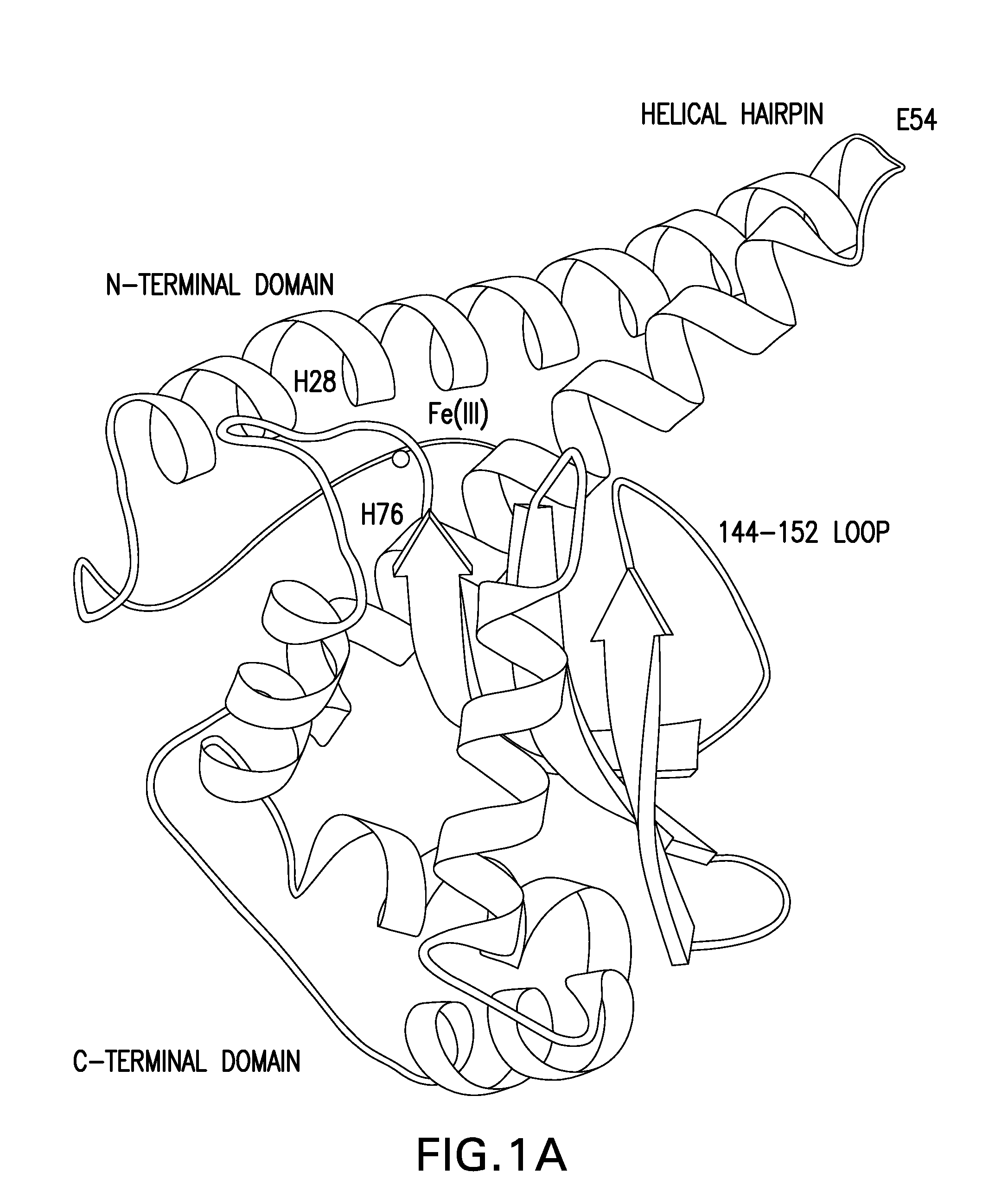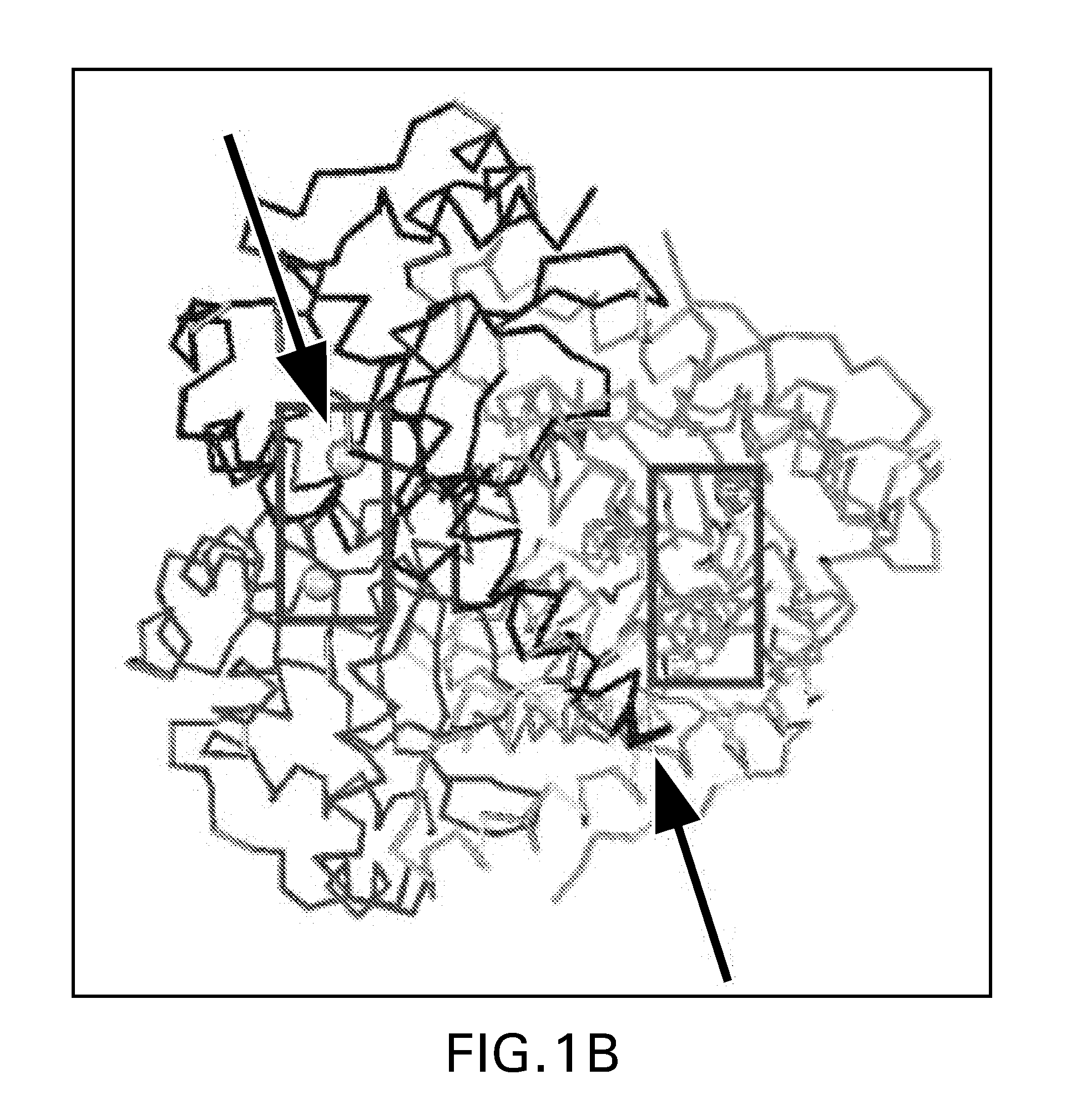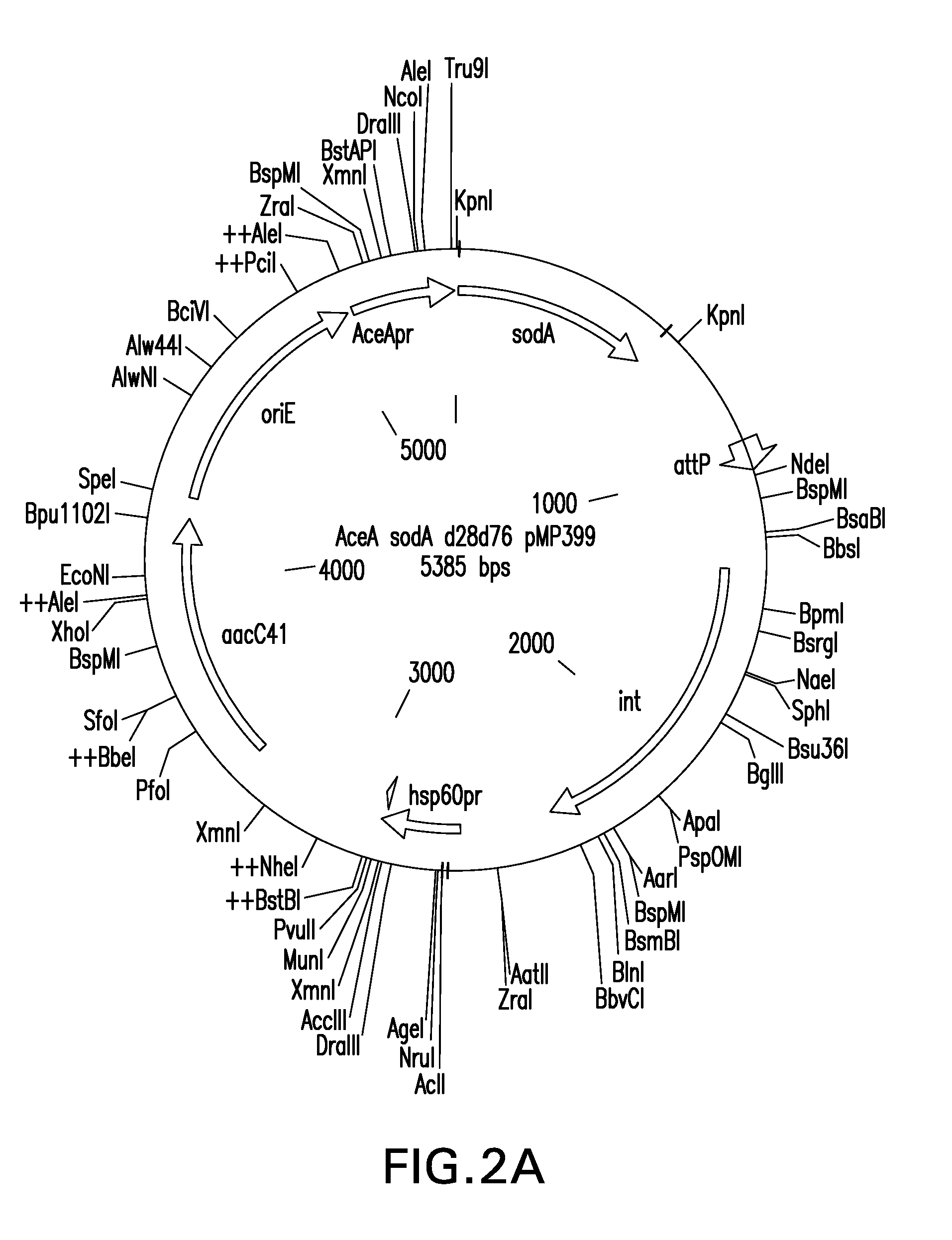Methods of enhancing the immunogenicity of mycobacteria and compositions for the treatment of cancer, tuberculosis, and fibrosing lung diseases
a technology of mycobacteria and compositions, applied in the field of vaccination, can solve problems such as damage to lung tissue, and achieve the effects of enhancing the recruitment and activation of innate immune cells, enhancing the presentation of antigens, and enhancing the immune respons
- Summary
- Abstract
- Description
- Claims
- Application Information
AI Technical Summary
Benefits of technology
Problems solved by technology
Method used
Image
Examples
example 1
Construction of SAD-BCG ΔH28ΔH76 [also Referred to as “BCG (mut sodA ΔH28ΔH76)”, or “SodA-Diminished BCG Expressing Dominant-Negative ΔH28ΔH76 Mutant SodA”] and Documentation of Reduced SOD Activity in Vitro
[0209]To construct SAD-BCG ΔH28ΔH76, a ΔH28ΔH76 sodA mutant in pCR2.1-TOPO was made by performing PCR-based site-directed mutagenesis on the wild-type sodA allele that had been PCR-amplified from chromosomal DNA from M. tuberculosis H37Rv. The open reading frame of the ΔH28ΔH76 mutant sodA allele is shown below. Initiation and stop codons are bold, and SEQ ID NO: 1 shows the position of the two deleted CAC (histidine-encoding) codons corresponding to amino acid 28 and amino acid 76 of the enzyme. The positions of these amino acid deletions in the context of major alpha helices, beta-strands, and the active site Fe(III) of the SodA monomer are shown in FIG. 1.
[0210]A BLASTN query of this DNA sequence against the nucleotide sequence of the complete M. tuberculosis H37Rv sequence wa...
example 2
Construction of SAD-BCG ΔE54 [aka BCG (mut sodA ΔE54), or SodA-Diminished BCG Expressing Dominant-Negative ΔE54 Mutant SodA] and Documentation of Reduced SOD Activity in vitro
[0218]An additional dominant-negative sodA mutant with a ΔE54 deletion was constructed using the techniques described. The position of this amino acid deletion in the context of major alpha helices, beta-strands, and the active site Fe(III) of the SodA monomer are shown in FIG. 1. DNA sequencing of the gene in pCR2.1-TOPO identified an additional nucleotide substitution that introduced a histidine→arginine substitution at position 28.
[0219]The mutant ΔE54 sodA allele was ligated into the chromosomal integration vector pMP399 and the plasmid vector pMP349 behind an aceA(icl) promoter to yield pMP399-mut SodA ΔE54 (SEQ ID NO: 29) and pMP349-mut SodA ΔE54 (SEQ ID NO: 24) (Table 1). pMP399-mut SodA ΔE54 was electroporated into BCG Tice to produce SAD-BCG ΔE54 (SodA-Diminished BCG, also called BCG (mut sodA ΔE54). ...
example 3
The Vaccine Efficacy of SD-BCG-AS-SOD—Implications Regarding the Usefulness of Dominant-Negative SodA-Diminished BCG Strains
[0221]To quantify the amount of improvement in vaccine efficacy that occurs as a consequence of reducing SodA production by BCG, BCG and SD-BCG-AS-SOD (SodA-diminished BCG constructed by using antisense techniques as previously described in WO 02 / 062298) were compared. Experimental details and results are shown in FIG. 5 and indicate that C57Bl / 6 mice vaccinated with SD-BCG-AS-SOD had lower lung cfu counts and less lung damage than mice vaccinated with BCG at six months following aerosol challenge with virulent M. tuberculosis.
[0222]In a separate vaccination-challenge experiment, C57Bl / 6 mice were vaccinated subcutaneously, rested for 100 days, and harvested for analysis of T-cell responses in the lung at 4, 10, and 18 days post-aerosol challenge with virulent M. tuberculosis. Compared to mice vaccinated with BCG, mice vaccinated with SD-BCG-AS-SOD exhibited g...
PUM
| Property | Measurement | Unit |
|---|---|---|
| Volume | aaaaa | aaaaa |
| Volume | aaaaa | aaaaa |
| Volume | aaaaa | aaaaa |
Abstract
Description
Claims
Application Information
 Login to View More
Login to View More - R&D
- Intellectual Property
- Life Sciences
- Materials
- Tech Scout
- Unparalleled Data Quality
- Higher Quality Content
- 60% Fewer Hallucinations
Browse by: Latest US Patents, China's latest patents, Technical Efficacy Thesaurus, Application Domain, Technology Topic, Popular Technical Reports.
© 2025 PatSnap. All rights reserved.Legal|Privacy policy|Modern Slavery Act Transparency Statement|Sitemap|About US| Contact US: help@patsnap.com



